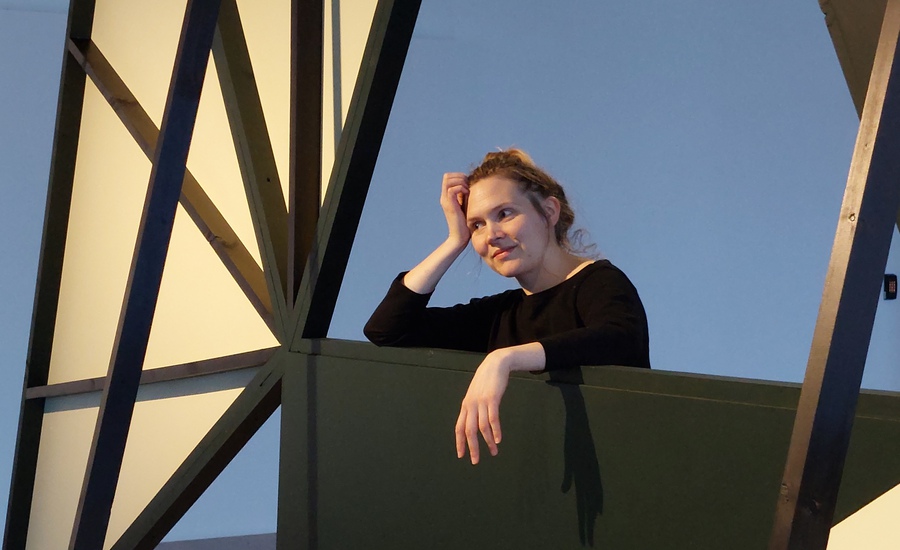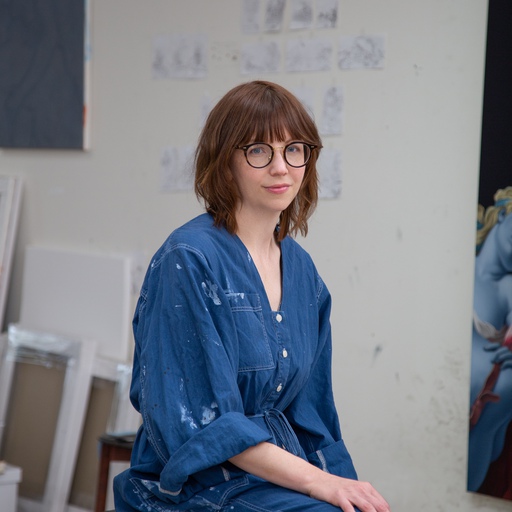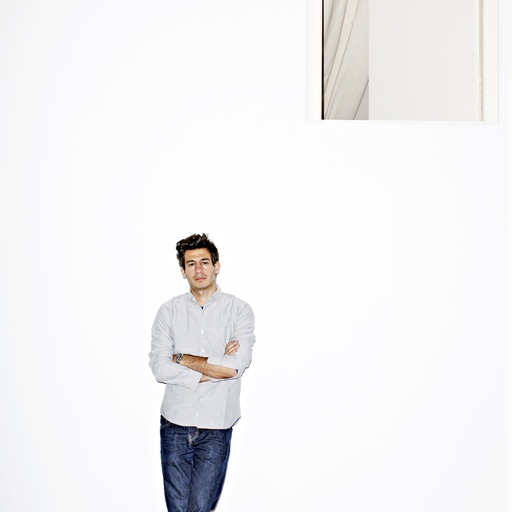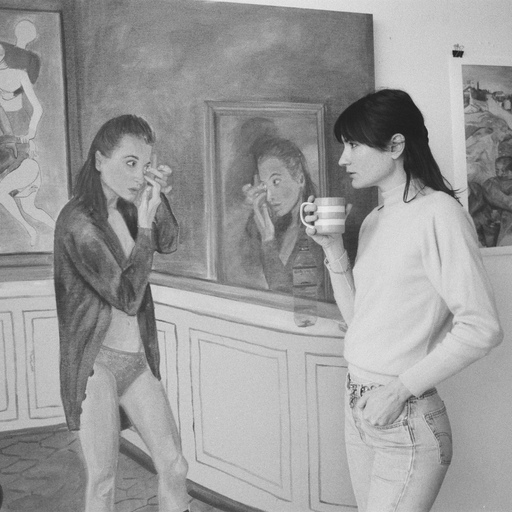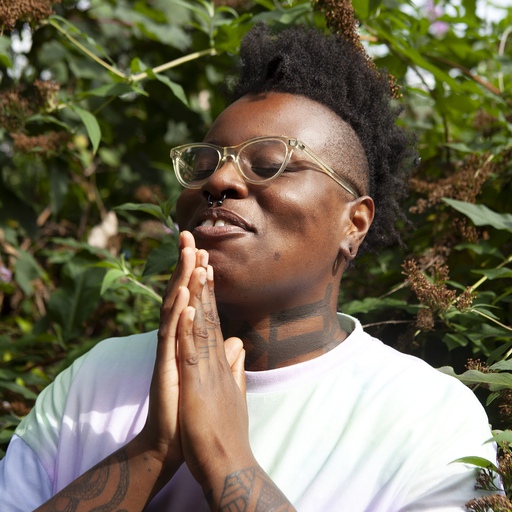Imagine if every element in the world was made out of the same string, only tied into different types of knots, writes Kristian Vistrup Madsen in Phaidon’s new book Prime: Art’s Next Generation . "Such was the mathematical theory of knots that emerged in the eighteenth century: one knot for lead, one for nitrogen, one for helium.
In her 2014 project Occupational Knots , Magnhild Øen Nordahl used colored rope to represent elements according to the theory. Beautiful, sculptural, and delicate, they hang from the wall like flowers left to dry. Even in the attempt to give form to pure knowledge, materials escape, act out, and produce something else as well. This “something else” is one definition of what art is—and Nordahl’s art in particular.
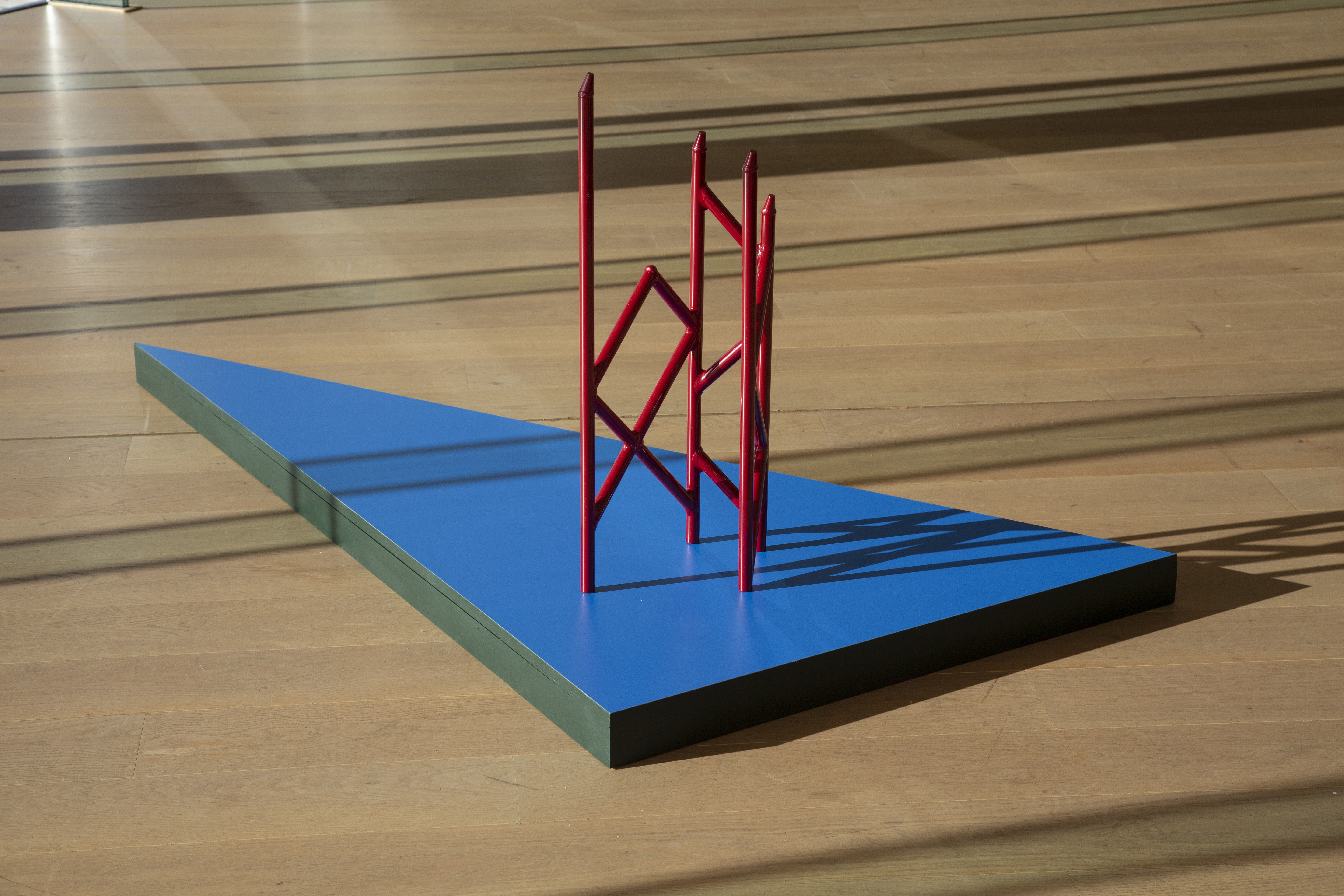 Magnhild Øen Nordahl –
Secret Support #2
(2019)
Magnhild Øen Nordahl –
Secret Support #2
(2019)
The mathematical knot theory, unlikely as it sounds, is not so far from the modern concept of DNA and not so far either from the burgeoning field of 3D printing. For her series Secret Support (2019), Nordahl took the fundamental scaffold that is repeated endlessly when producing 3D-printed objects and translated the form into sculptures over a meter in height and made out of anodized aluminum tubes in luminous green, blue, orange, and red. These strange shapes, which look like a lighting truss or playground architecture, were dropped into the epic Norwegian landscape as if to make visible something that was already there. The design of the scaffolding is patented and may not be copied, so Nordahl had to reconstruct it manually from digital files. It is by such instances of irony, when the sheen of reality is ruptured and its underlying structure made clear, that Nordahl’s work takes place.

Magnhild Øen Nordahl – Objects at Hand (2022)
Technology is not developed in a vacuum; it has specific histories, and gaining knowledge of those histories allows us to understand why things are made the way they are. Through her research into 3D rendering programs, Nordahl came across the “Utah teapot,” a computer-generated teapot from the mid-1970s, which has become ubiquitous as a test item in 3D modeling software. Just as Secret Support required a translation from file to physicality, in the video How to Make a Utah Teapot (2016), Nordahl asks an experienced ceramicist to craft the pot in clay. We watch her hands move deftly, securely, calmly. In an interview with Hans Carlsson, Nordahl said about the work, “I actually had to re-film some shots, and I could mix the new footage with the existing sound recording because she does things in exactly the same rhythm each time she makes the teapot.” In Nordahl’s work, translation is not a one-way street. She helps us to see when technology expands beyond its own boundaries, turning into art, as well as when human hands become so dexterous as to be mechanical. Both are equally impressive—perhaps merely different knots tied from the same string." - Kristian Vistrup Madsen.

Magnhild Øen Nordahl – Installation view of Objects at Hand (2022): Holder (2020), Explode Mesh II (2022, #6 Secret Support (2019)
Nordahl is one of over a hundred contemporary artists to be featured in Prime: Art's Next Generation , Phaidon's new survey of promising contemporary artists. We asked her a few questions about her life and art. When you've read the story take a look at Nordahl's artist page on Artspace.
How would you describe what you do? I use sculpture as a way to examine things that I am wondering about. My main interest is abstraction, that is how we simplify the complex sensory world into abstract concepts, and how these abstractions become productive for how we look at, and construct the world around us. Making sculptures is a way for me to pick apart and study abstractions, and to make new sculptural versions of them. The abstractions I work with often come from the natural sciences and more recently from 3D-modeling, both areas that operate through a language of geometry.
What’s the most exciting thing about where you are in your career right now? To be included in this book I must say is a real honor and very exciting! Apart from that I am finishing up my practice-based PhD in art this spring, and it has given me the great privilege to dive deep into what the core of my practice is and at the same time to explore areas that are completely new to me. This has helped me to understand better what it is I am doing and why, and it feels like a really good place to be going forward in my practice.
What’s on your mind right now? The main thing that occupies my mind workwise is a VR-piece I am developing together with Cameron MacLeod, commissioned by the Munch Museum in Oslo for their Triennale this fall. Cameron and I also have a daughter together who just turned 5-years-old last week, and it is a joy to discover the world through her eyes and a gift to be a parent. At the same time, it is a real challenge to learn how to balance art and family life.
What do you think of when you think of the word prime? After receiving the book, it is difficult to think about the word prime without connecting it to the cover image with two mirrored triangles. So, I associate the word prime with the triangle shape and with primary shapes, geometry, even with “primitives” which is a term used in 3D modeling for basic geometric shapes used as building blocks to build up more complex three-dimensional objects.
In an Instagram age do art books still matter to artists? Instagram and art books are different mediums with different possibilities and limitations and in my opinion, they complement each other but cannot replace each other. Scrolling through Instagram can get quite tiresome, and to me it feels like a real treat to have a beautiful, physical book in hand that I can look at without being interrupted by alerts and messages.
Using the Prime book as an example I appreciate being served a curated selection of artists and artworks, to read well-written introductory texts, and I also think that as a survey of a certain moment in contemporary art, it makes sense for the book to be in a book-shelf format that we can pick back out in 10 years to look at. I look forward to doing that!
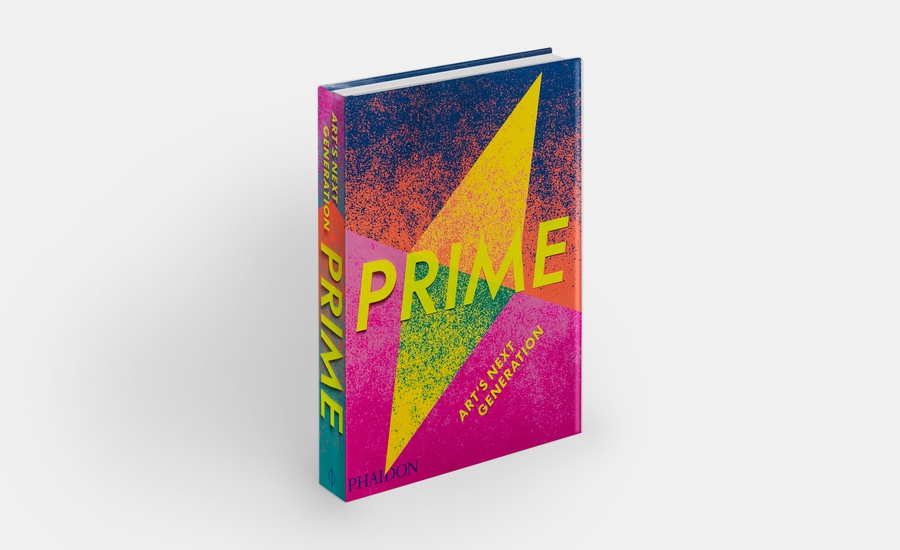
To see more of Nordahl's work, and that of the art world's most gifted next generation, order a copy of Prime: Art's Next Generation here .











